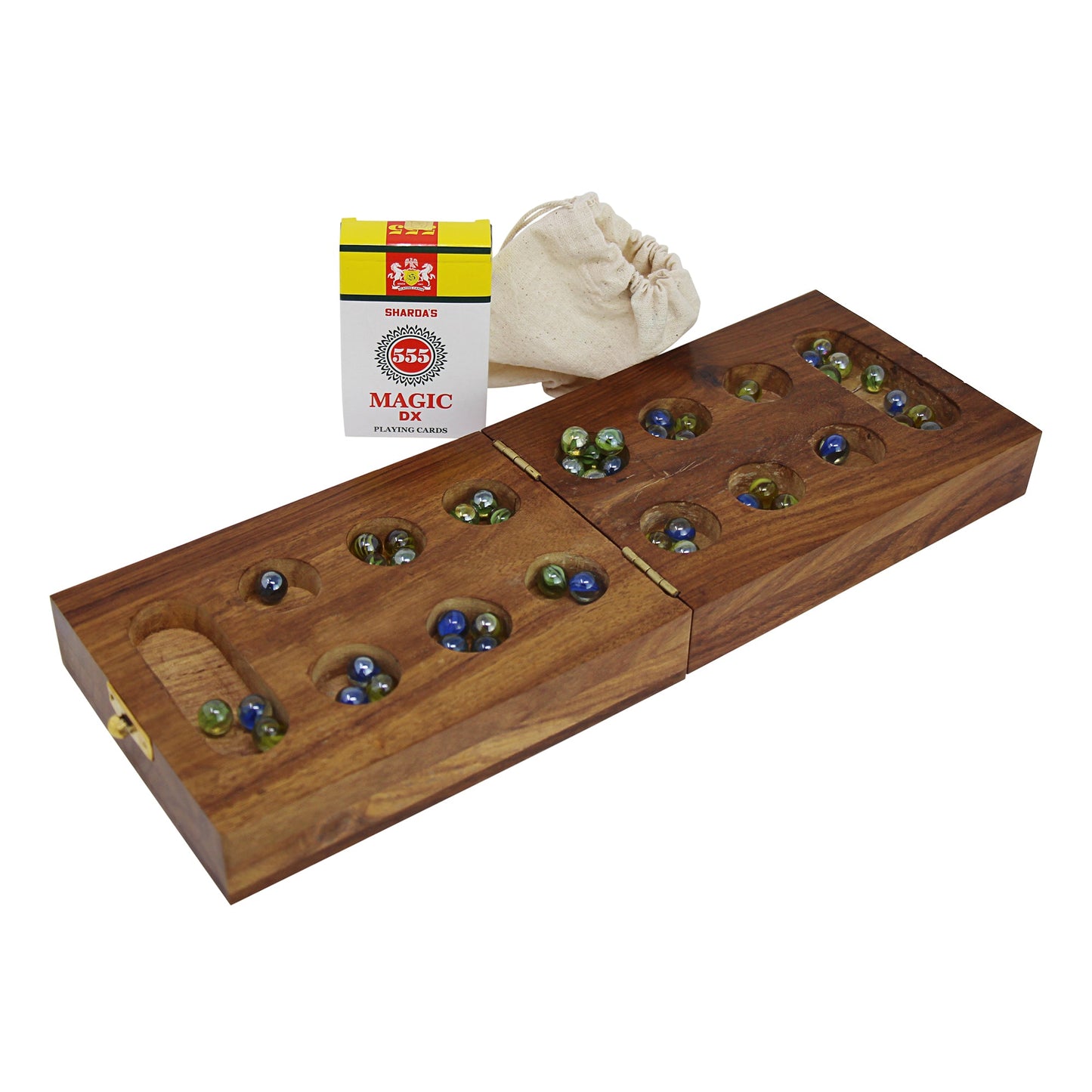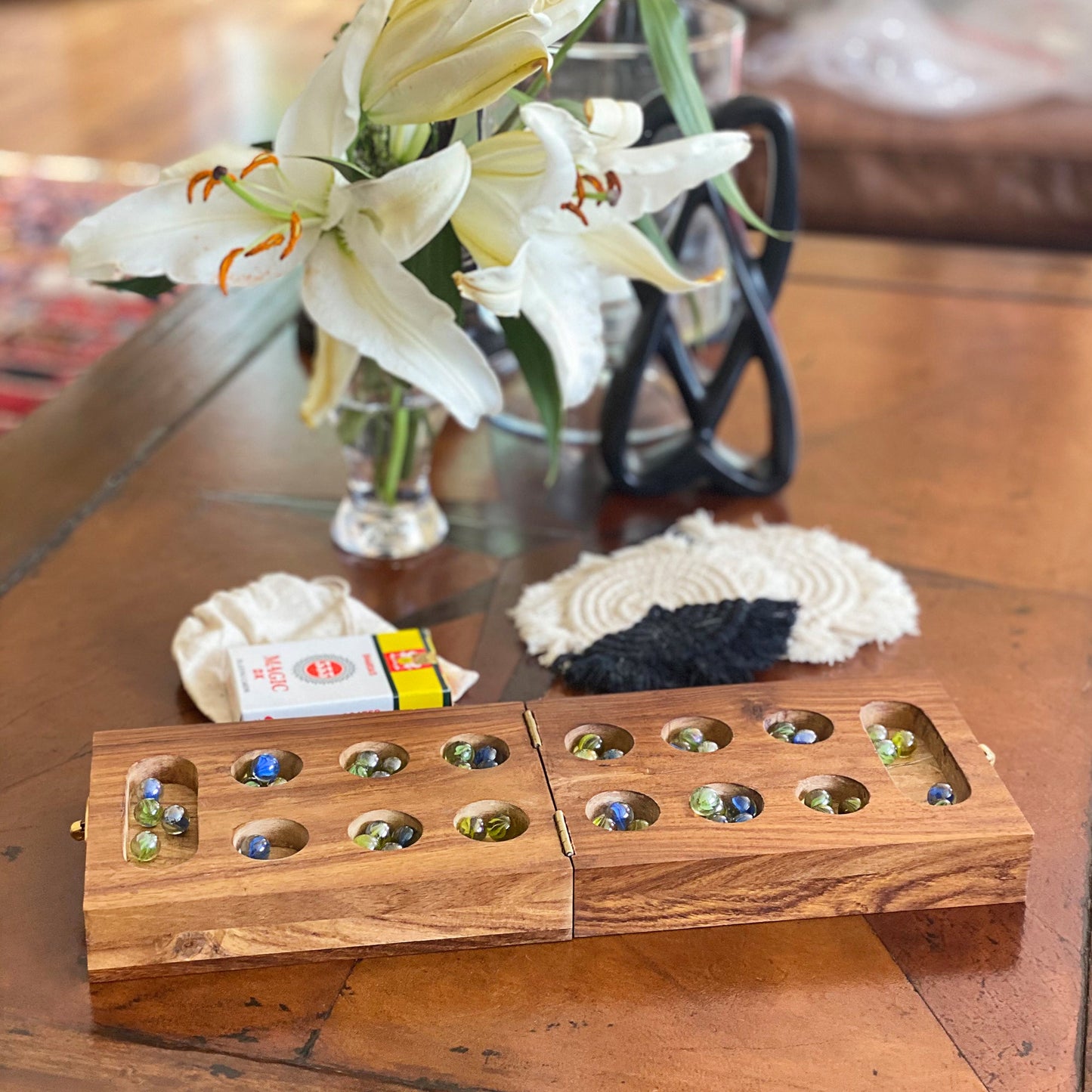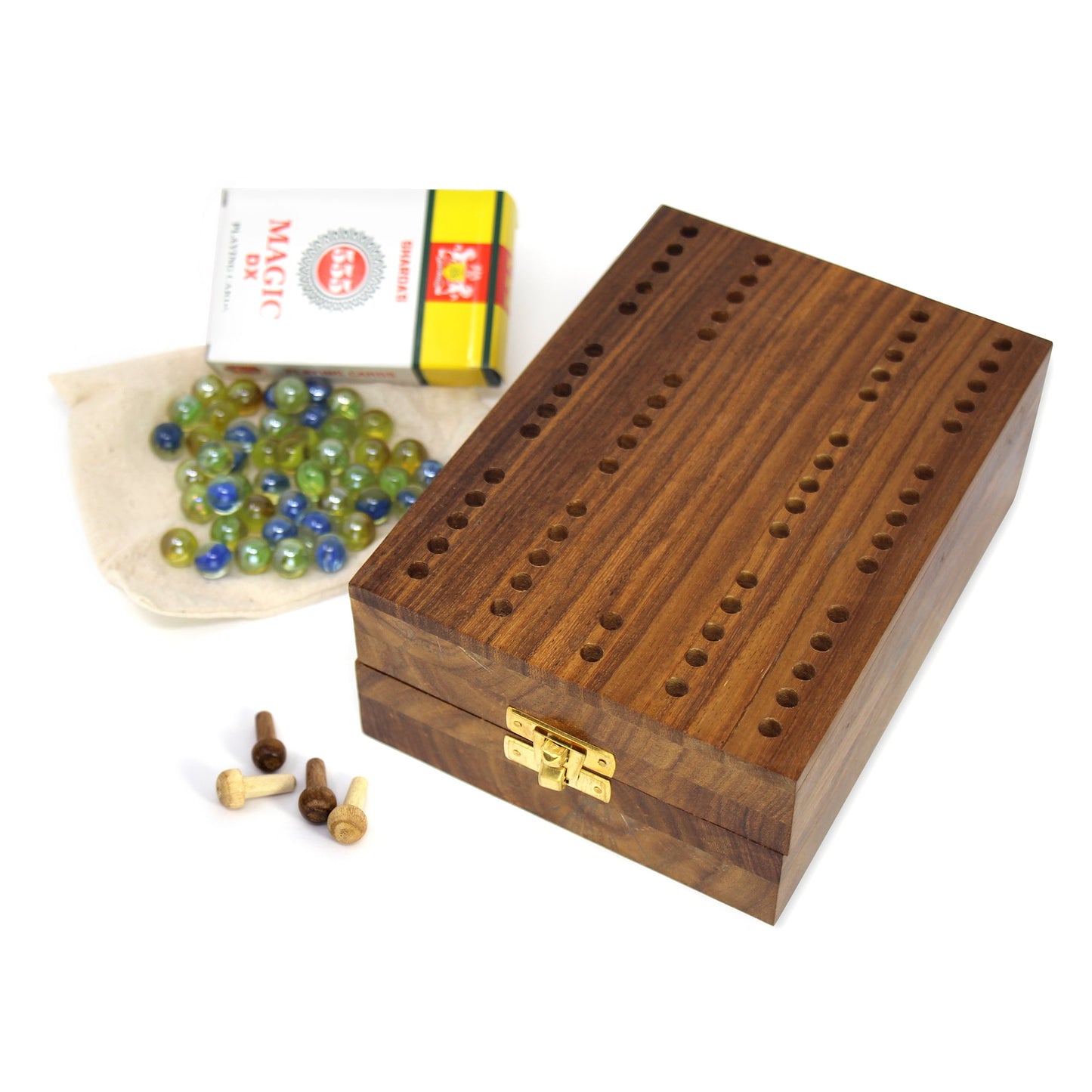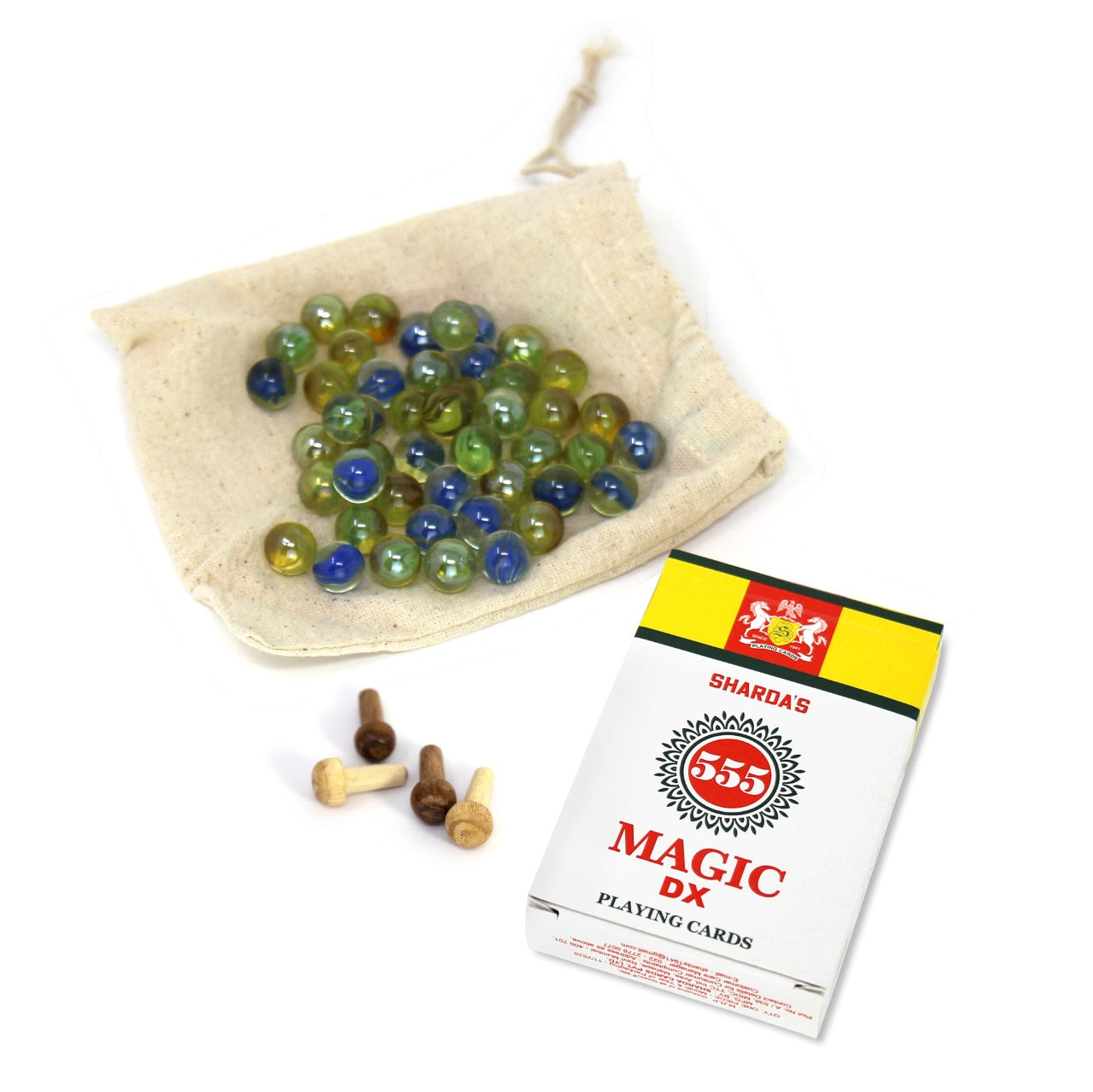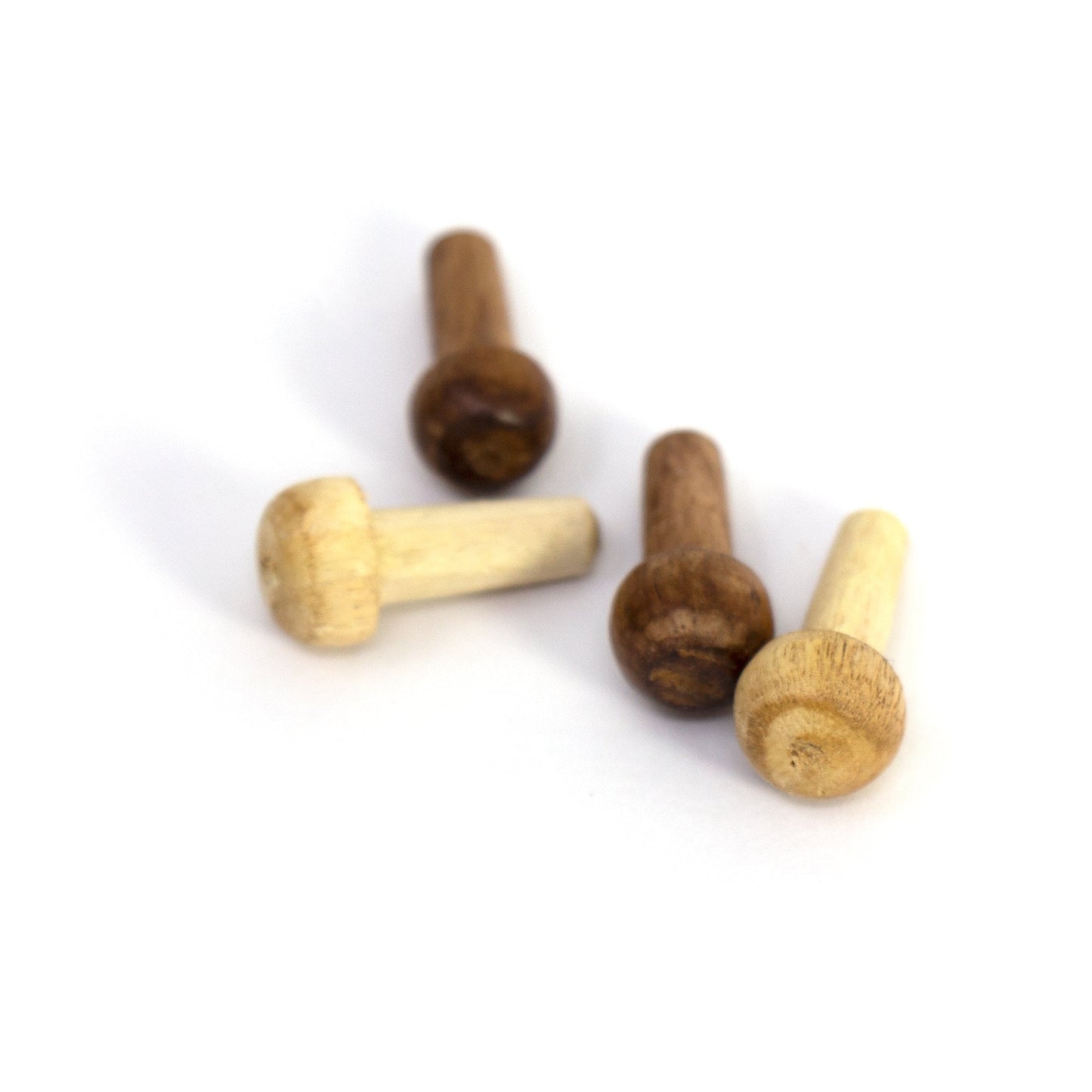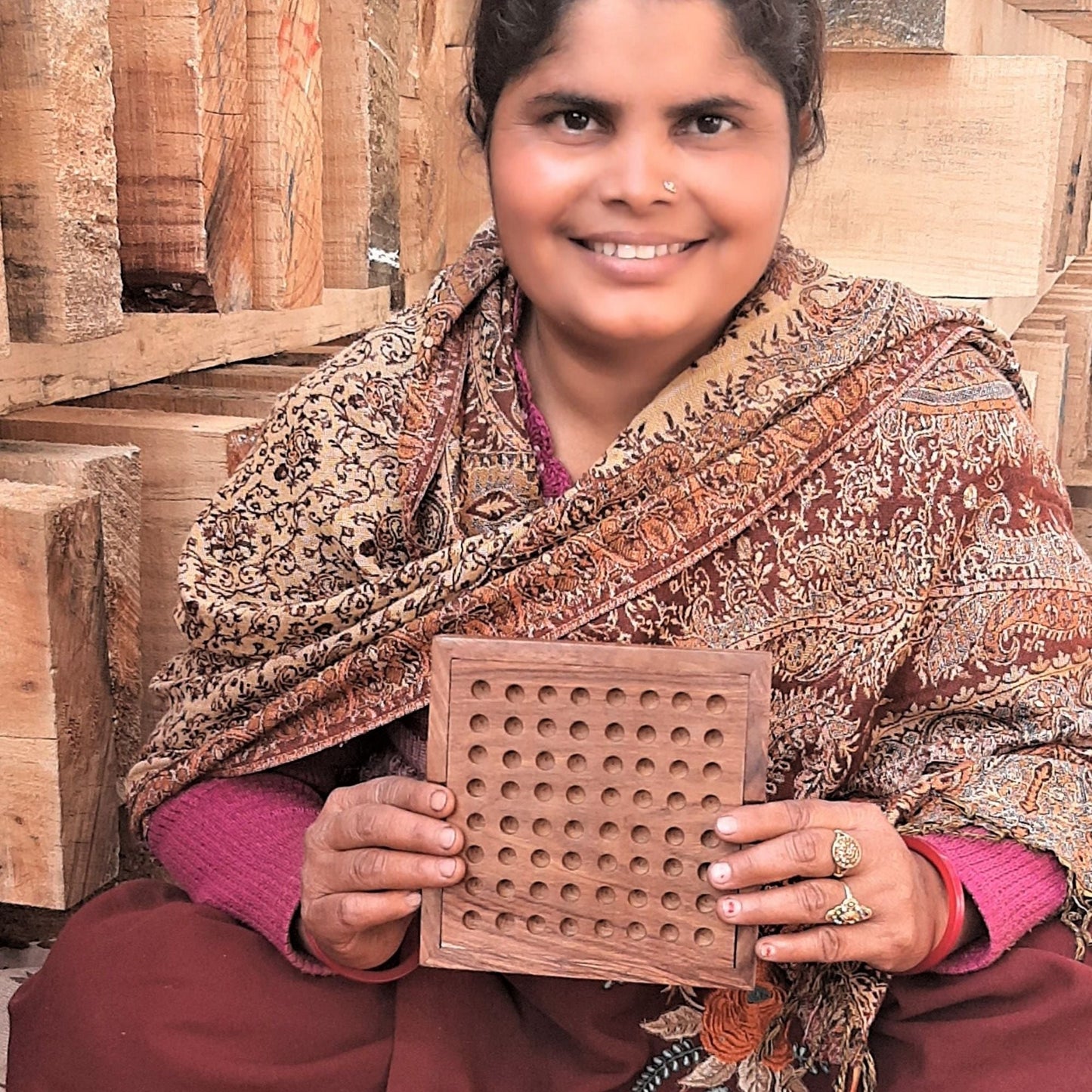Global Crafts
Juego combinado Mancala Cribbage hecho a mano
Juego combinado Mancala Cribbage hecho a mano
No se pudo cargar la disponibilidad de retiro
Esta exquisita caja de madera Sheesham se transforma en dos juegos: mancala y cribbage. El juego es una hermosa pieza decorativa para el hogar que también es funcional para crear recuerdos divertidos del juego para la familia. La caja del juego está tallada a mano y tiene agujeros para clavijas en el exterior para guardar objetos de cribbage. La caja está acentuada con bisagras de latón y un cierre de latón. Cuando se abre, la tabla de madera revela las doce copas talladas de Mancala. El juego incluye naipes, una bolsa de canicas y cuatro clavijas de madera. Instrucciones incluidas.
Características del producto:
- Tipo: Juegos.
- Colores: Madera teñida.
- Materiales: Madera de Sheesham.
- Dimensiones: Cuando está cerrada, la caja mide 5 pulgadas por 7 pulgadas.
- Piezas de juego incluidas: baraja de cartas, cuatro clavijas, cuarenta y ocho canicas.
Historia detrás del arte:
Los juegos tallados a mano se elaboran en Saharanpur, en la región de Uttar Pradesh, India, conocida por las antiguas técnicas de tallado en madera. Los templos de esta región son testigos del talento temprano de los artesanos de esa región. Hoy en día, el oficio todavía se practica utilizando herramientas manuales muy parecidas.
Debido a la naturaleza hecha a mano, pueden ser evidentes ligeras variaciones en tamaño, color, forma, patrón u otras características. Cada pieza es verdaderamente una obra de arte única, elaborada a mano con amor.
Share
About the Artisans
About the Artisans
 Joyeria Semilla meaning Seed Jewelry is a small fair-trade workshop in the Andean town of Villa de Leyva, Colombia. Girasol Taborda, a local artisan and social entrepreneur, started the workshop in the mid-1990s.
Joyeria Semilla meaning Seed Jewelry is a small fair-trade workshop in the Andean town of Villa de Leyva, Colombia. Girasol Taborda, a local artisan and social entrepreneur, started the workshop in the mid-1990s.
Joyeria Semilla’s objective is three-folds; to create new jobs, revive Colombia's handicrafts sector and to motivate locals to better manage their natural resources. The organization works primarily with socially and economically disadvantaged youths, single mothers and people with disabilities in the area. The company offers free training in product design, technical training and marketing to new members. Joyeria Semilla has trained them in the craft of jewelry-making.

Caña Flecha or “Gynerium Sagittatum” is a locally found palm tree in the regions of the Caribbean coast. The leaves from this plant are used for making jewelry, woven hats, bags and baskets. The Zenú Indians were and their descendants inherited the tradition of picking veins of the green palm leaf for weaving. These veins were made into woven hats and other products for their personal use.
The Zenú culture is said to have existed between 200BC to1600AD. With the arrival of the colonizers in the 16th century, the indigenous community declined of unknown reasons. Today a very small population remains that claims the inheritance of the almost extinct Zenú tribe. Known for their skills in the construction of major waterworks, canals and irrigation system along with being skilled goldsmiths, examples of their accomplished craftsmanship are found in various museums around the world. Their larger means of subsistence were hunting, farming, fishing and trading.
Caña Flecha is found in abundance in the region, and hence makes for a sustainable and naturally available raw material for these products. Every bit of the plant is utilized – from using in building walls and roofs in houses to food for cattle and medicinal purposes. It is from the central vein of the leaf that the fibers for weaving are obtained. After the hard surface is peeled off, the fibers are left in the sun to dry and undergo a natural tinting process; these fibers are barely about 1 millimeter in thickness and hence call for a lot of skill and patience to weave with. The dried fibers are then processed for natural coloration - some are boiled with lemon to whiten them and some are treated with mud and boiled with plantain leaves to blacken them. The designs are based on ancient motifs and mathematical representations, which are inspired by the early Zenú culture.
